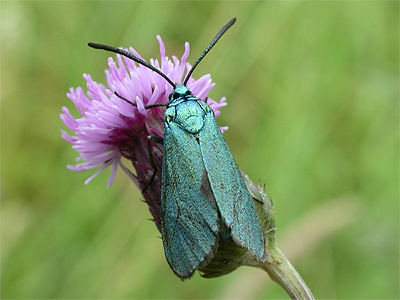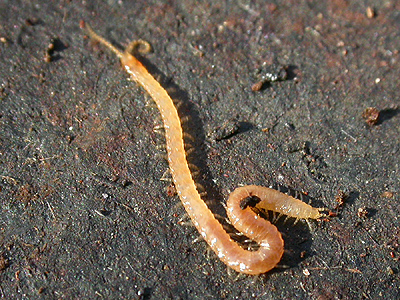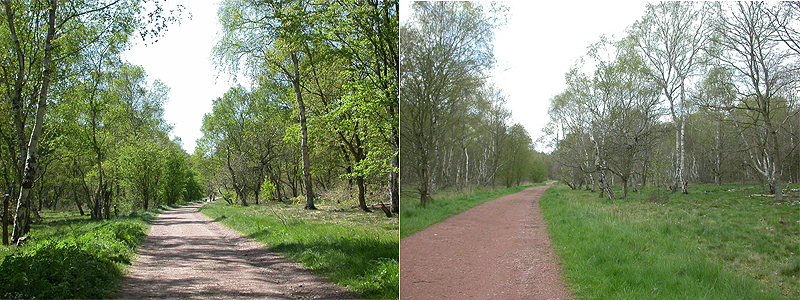

| Invertebrate news 2012 |
| Featuring news and sightings from Eakring and Sherwood Forest |
| In most cases, clicking on the photos will link to larger images or related pages |
| New site for The
Forester in Nottinghamshire... A casual hour spent walking around Sherwood Heath SSSI recently, saw us record four adult Forester moths nectaring on Creeping Thistle flowers. The Forester is rare in Nottinghamshire, restricted to a couple of localities in the Sherwood Forest area, including Budby South Forest and Clumber Park and the four on Sherwood Heath represent an important first for the site. Unfortunately, most of the Thistle and Ragwort flowers had been cut down, but the few flowers remaining highlight the importance of leaving 'rank' nectar-bearing plants like Creeping Thistle on SSSI's, as they are vitally important to the fauna they attract. Unfortunately, the habitat conservation bodies believe they devalue a site's SSSI status, but allow these plants a place and you can get species' such as the Forester moth. |
 |
|
| An
increase in numbers of the 2-spot Ladybird ... May 2012 has seen a significant increase in sightings of the 2-spot Ladybird Adalia bipunctata which is now turning up in small numbers at most sites we visit. Four in our own garden recently, was the highest count we have had here in many years. Although numbers are currently only small, they do represent the most significant counts locally since 2007. |
||
| A close encounter
of the Geophilid
kind ... May 29th was yet another blank night for Glow Worms at Clipstone Old Quarter, but the sighting of another invertebrate known to produce a glow, has now become the number one target species to capture an image of. On the top path of our survey route, which is the darkest section on site, I spotted a bright glow and immediately thought the first Glow Worm had appeared and that it had somehow been missed on the first walk a few minutes previous. Then I thought it must be a glowing larva located under a few leaves on the edge of the path. I was stunned when after kneeling down for an investigative look, suddenly saw a Geophilid Centipede glowing totally from end to end as it moved about on the path surface. Even more interesting was the strong trail of glowing droplets of liquid left in its path. |
 |
|
| ... | ||
| Quite frankly, this was
one of the most stunning sights I have personally ever
seen and had read about their glowing ability a few
months ago, but little could be found out about how
bright a Geophilid glow was, how long it lasted
or anything else. There were very few useful reports on the internet, but there was one on the UK Glow Worm Survey website. But it seems that the few reports there are, all came from members of the public, who's reported sightings often tend to be extremely vague and usually of little accuracy. The Centipede glowed for at least 15 seconds and it may have only stopped glowing on an unsuccessful attempt to pot it, but the droplets forming the trail continued to glow for slightly longer. |
||
| Potential new information regarding
the range of Cryptocephalus coryli ... On 20/05/12, Gary Joynt found a female at the base of a Birch trunk, which has effectively changed our knowledge of Cryptocephalus coryli at Sherwood. The importance of the find, is that this beetle was discovered for the first time within closed canopy woodland, around 50-60 metres away from the woodland edge where the beetle regularly occurs. It means that coryli must also be found on Birches situated quite deep within areas of woodland and that they are not completely confined to warm south-facing trees or woodland edges. |
| First
Cryptocephalus coryli of the year ... The first adult (female) Cryptocephalus coryli, known commonly as the Hazel Pot Beetle, was found recently emerged on grass at Sherwood Forest CP on May 17th. |
| Lily Beetle new
to Sherwood Forest in 2012 ... A Lily Beetle found in the visitor centre compound by ranger Gary Joynt in early May 2012, is the first ever NNR record. This common garden beetle, seems to be spreading away from its favoured urban garden habitat, as we also recorded an adult from woodland (on Garlic Mustard) near Market Warsop on May 12th. |
| 2012 - a late
Spring... What a difference a year makes! These two images of an area of Sherwood Forest Country Park, were taken in early May 2011 (left) and 2012 (right) Although Spring was extremely early last year, normally by this time many beetle species are active and already being found in good numbers. But at the moment it looks and feels more like mid-April, rather than mid-May. |
| ........ |
 |
| ........ |
| We only conducted our first search for Cryptocephalus coryli on May 14th, but despite being sunny for long periods, a chilly breeze ensured little was found and there is no sign of any adult C.coryli yet. |
| Third Sherwood
record of Coelotes atropos ... A large spider found under a piece of fallen bark in a section of the Birklands West and OIlerton Corner SSSI, turned out to be a female Coelotes atropos and the first Sherwood Forest record since the BAS survey of 1978. |
| Some
early coleoptera
... 7-spot Ladybirds have often been active over the Winter period so far and small groups can still be found tucked into Thistle heads and other dead vegetation. Our first walks around Sherwood Forest recorded a few Nalassus laevioctostriatus and the active workings of the impressive Minotaur Beetle commonly at Clipstone Old Quarter, whilst a single Tetratoma fungorum was disturbed from a Birch Polypore at Sherwood Forest CP. |
||